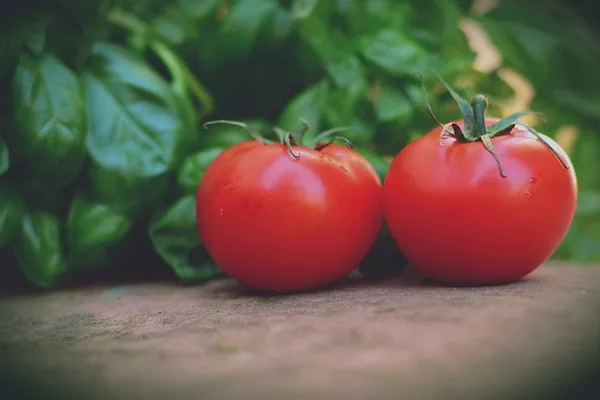Tomatoes are a staple in many kitchens, prized for their versatility and rich flavor. While purchasing tomato plants from a nursery is a common practice, growing tomatoes from seeds allows for a deeper connection with the gardening process and often results in healthier plants. This comprehensive guide will walk you through the step-by-step process of successfully growing tomato plants from seeds, ensuring a bountiful harvest.
Selecting the Right Tomato Seeds
Choosing the right tomato seeds is the first crucial step in the journey of growing healthy and productive tomato plants. Consider factors such as the variety of tomatoes you want to grow, the climate in your region, and the available space for cultivation. There are countless tomato varieties, each with its own unique flavor profile, size, and growth characteristics. Some popular choices include cherry tomatoes, beefsteak tomatoes, and roma tomatoes.
It’s important to select seeds from reputable suppliers to ensure their viability and quality. Check for information on the seed packet regarding the ideal growing conditions, germination time, and expected maturity date. Pay attention to the specific needs of the chosen tomato variety to provide optimal care throughout the growing process.
Materials Needed for Germination
Before sowing the seeds, gather the necessary materials for germination. These include:
Seed trays or pots: Choose containers with drainage holes to prevent waterlogging.
Seed starting mix: Opt for a well-draining mix that provides the right balance of nutrients for seedlings.
Watering can or spray bottle: Maintain soil moisture without causing disturbance to delicate seedlings.
Plastic wrap or a humidity dome: Create a warm and humid environment to promote germination.
Heat mat (optional): Some tomato varieties benefit from bottom heat to enhance germination.
Sowing Tomato Seeds
Start the tomato growing process by sowing the seeds indoors, 6-8 weeks before the last expected frost in your region. Follow these steps for successful germination:
Fill the seed trays or pots with the seed starting mix, leaving about half an inch of space below the rim.
Moisten the soil thoroughly before planting the seeds to ensure even distribution of moisture.
Plant 2-3 seeds per cell or pot, placing them about a quarter to half an inch deep.
Cover the seeds with a thin layer of soil and gently press down to ensure good seed-to-soil contact.
Mist the soil surface with water and cover the trays or pots with plastic wrap or a humidity dome to create a mini greenhouse effect.
Place the trays in a warm location, ideally around 70-80°F (21-27°C), and provide sufficient light.
Caring for Tomato Seedlings
Once the seeds have germinated, it’s crucial to provide proper care to ensure robust seedlings. Follow these guidelines:
Light: Place the trays in a location with bright, indirect light or use fluorescent grow lights if natural sunlight is limited. Tomato seedlings require at least 12-16 hours of light per day.
Watering: Keep the soil consistently moist but not waterlogged. Use a watering can or spray bottle to avoid disturbing the delicate seedlings.
Thinning: When the seedlings develop their first set of true leaves, thin them to one strong seedling per cell or pot. Choose the healthiest and most vigorous plant to continue growing.
Fertilizing: Once the seedlings have a few sets of true leaves, start feeding them with a balanced liquid fertilizer. Follow the recommended dosage on the fertilizer label.
Transplanting Tomato Seedlings
When the seedlings have grown to about 6-8 inches in height and outdoor temperatures have warmed, it’s time to transplant them into larger containers or directly into the garden. Follow these steps:
Harden Off: Gradually acclimate the seedlings to outdoor conditions by exposing them to sunlight and wind for increasing periods over 7-10 days.
Choose the Right Location: Select a sunny spot in the garden with well-draining soil for transplanting. Tomatoes thrive in full sun, receiving at least 6-8 hours of direct sunlight per day.
Prepare the Soil: Amend the soil with organic matter, such as compost, to enhance fertility and drainage.
Transplant: Dig a hole slightly deeper than the root ball of the seedling and gently transplant it, burying the stem up to the first set of leaves. This encourages the development of a strong root system.
Watering: Water the transplanted seedlings thoroughly and provide a layer of mulch to conserve moisture and suppress weeds.
Maintaining Healthy Tomato Plants
To ensure a successful harvest, continue to provide proper care for your tomato plants:
Watering: Maintain consistent soil moisture, aiming to keep the soil evenly moist. Water at the base of the plants to prevent fungal diseases.
Staking and Support: As the tomato plants grow, provide support using stakes, cages, or trellises to keep the plants upright and facilitate air circulation.
Pruning: Remove suckers (the small shoots that develop in the leaf axils) to promote better air circulation and focus the plant’s energy on fruit production.
Fertilizing: Continue feeding the tomato plants with a balanced fertilizer throughout the growing season. Adjust the frequency based on the recommendations for the specific fertilizer you’re using.
Pest and Disease Management: Regularly inspect your plants for pests and diseases. Early detection allows for prompt intervention, whether through natural remedies or the use of organic pesticides.
See Also: How Do Plants Breathe?A Comprehensive Look
Conclusion
Growing tomato plants from seeds is a rewarding endeavor that offers a sense of accomplishment and a connection to the natural cycle of plant life. By selecting quality seeds, providing proper germination conditions, and offering attentive care throughout the growing season, you can enjoy a bountiful harvest of flavorful tomatoes. Whether you’re a novice gardener or a seasoned enthusiast, the journey from seed to fruit is filled with valuable lessons and the satisfaction of nurturing life from its earliest stages.


